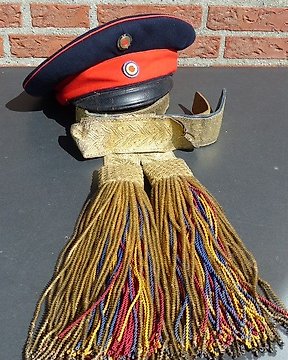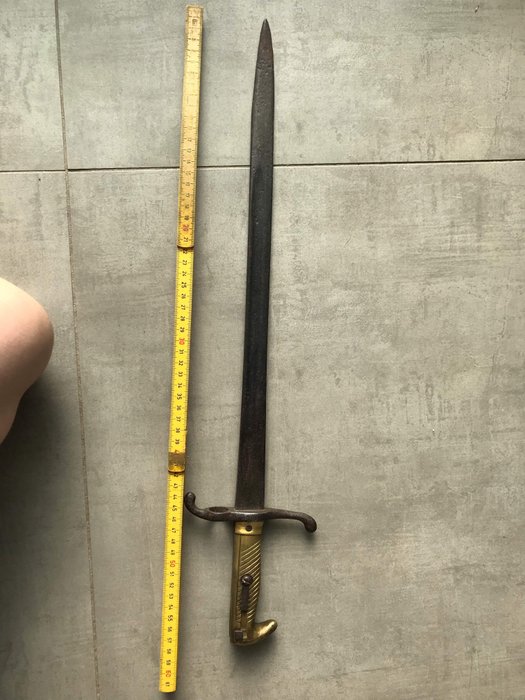
Allemagne - Casquette et écharpe pour un officier d'infanterie de l'armée impériale allemande du pays - Uniforme militaire
Nº 28558681

Nº 28558681

Beautiful M1871 bayonet markings more difficult to see but otherwise a top piece.
Very nice m1871 Mauser bayonet type 71/84 (one of the very first bayonets) splendid piece. No sheath present.
The first world war, a time of mass production and uniformity, was preceded by an era of grandeur. Soldiers were equipped with colourful uniforms (such as the blue-red with which the French army entered the Great War), shiny outfits (including the famous German "Pickelhaube" or "Pin helmet") and dazzling weapon outfits.
The S1871 has a copper handle, which is grooved on one side, and opposite parry bars of which the upper parry contains the ball race. The handle contains a locking system with a spring. With the successors of the S71, such as the S71/84, that system was replaced by an internal spring with a push button.
The version with sawback was meant for ordinary soldiers of special units. In practice, however, those versions were often granted to higher placed teams who like flaunting a rarer weapon (only 6% of the produced bayonets was provided with a saw tooth).
In the First World War, in the trenches one tried to stand out as little as possible. Yet, due to the massive need for weapons, obsolete weapons like these were extracted from the arsenals.
This type of bayonet should be used to ensure that there is a locking system to place the bayonet on the rifle. There are many parade and civic versions that cannot be fastened on the rifle. The value of those civil versions is often similar to the "real" S1871 (sometimes even higher, especially with etched blades) but strictly they are not bayonets.
Comment acheter sur Catawiki ?
1. Découvrez des objets d’exception
2. Faites la meilleure offre
3. Effectuez un paiement sécurisé